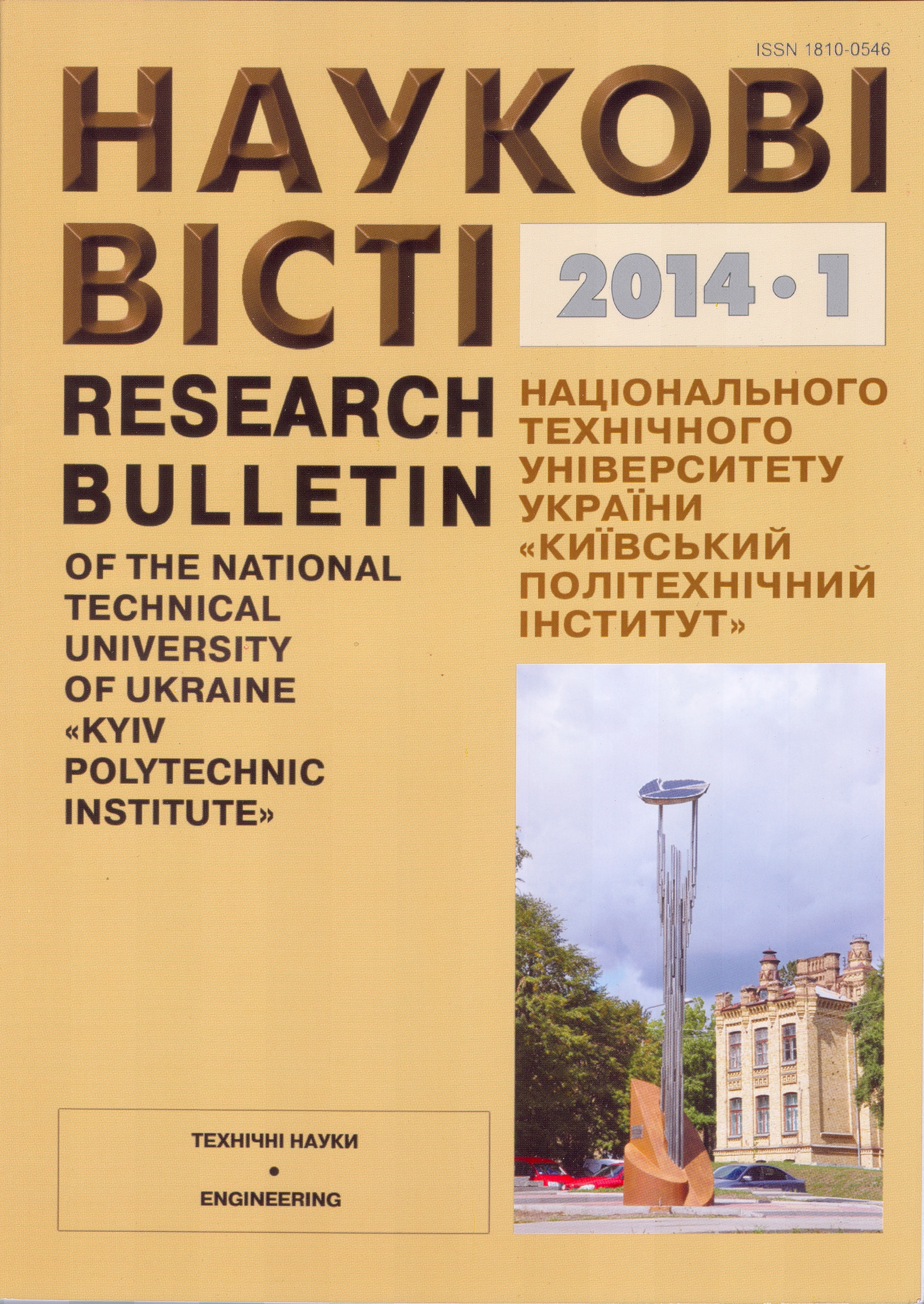Selecting of Mathematical Models for Determination of Energy Production Facilities “Standards” on the Basis of a Multi-Criteria Approach
DOI:
https://doi.org/10.20535/1810-0546.2014.1.60387Keywords:
Operational control system of energy efficiency, “Standard” of energy consumption, Criteria of adequacy of mathematical models, Fuzzy logic, Technique of criteria “importance” ranging, DEA (Data Envelopment Analysis) analysisAbstract
The necessity of improvement of approaches monitoring energy resources consumption efficiency, which are applicable today in Ukraine and are based on a system of rationing of specific expenses of fuel and energy, is analyzed. For this purpose the possibility of application of the operational management of fuel and energy resources consumption efficiency, which represent set of so-called systems of planning and control of energy consumption was shown. Some methods of energy resources consumption mathematical modeling which can be applied to establishment “standards” of power consumption in operative control systems of fuel and energy use efficiency are considered. Approach to a choice of the mathematical model for use on a number of quantitative criteria of their adequacy taking into account additional “qualitative” criteria allowing to take into account other advantages and disadvantages of the considered models is offered. The technique of numerical values determination of “qualitative” criteria by means of mathematical apparatus of fuzzy logic is given. For the purpose of choice problem solution of the method of modeling by several criteria at the same time possibility of technique application of criteria “importance” ranging, and also a method of the environment functioning analysis (DEA the analysis, Data Envelopment Analysis) is considered.References
Находов В.Ф. Энергосбережение и проблема контроля эффективности энергоиспользования // Промислова електроенергетика та електротехніка Промелектро. – 2007. – № 1.– С. 34–42.
Пособие по курсу “Основы целевого энергетического мониторинга”. – М.: ЭНИЗАН, АСЭМ, 1997. – 38 с.
Находов В.Ф., Бориченко О.В., Іванько Д.О. Контроль ефективності енерговикористання в системі енергетичного менеджменту // Вісник КНУТД. – 2013. – № 6 (74). – C. 67–77.
Стеценко І.В., Бедерак Я.С. Побудова багатофакторних математичних енергоспоживання на хімічному виробництві // Энергетика. Энергосбережение. Энергоаудит. – 2013. – № 7. – С. 41–48.
J. Phil, “Getting started with Monitoring & Targeting (M&T)”, Fundamental Ser., no. 7, pp. 29–32, 2004.
J. Pooley. (2005). Quick Start Guide to Energy Monitoring & Targeting (M&T) [Online]. Avaliable: http://www.oursouthwest.com/SusBus/susbus9/m&tguide.pdf.
Находов В.Ф., Іванько Д.О., Головко А.В. Вибір методів математичного моделювання процесів енергоспоживання в системах оперативного контролю енергоефективності // Енергетика: економіка, технології, екологія. – 2013. – Спецвип. Матеріали аспірантських читань пам’яті А.В. Праховника. – C. 20–27.
Дьяконов В.Н. MATLAB 6.5 SP1/7 + Simulink 5/6® в математике и моделировании. – М.: СОЛОН-Пресс, 2005. – 576 с.
Воронцов К.В. Лекции по методам оценивания и выбо-ра моделей. – Режим доступа: http://www.Machi neLearning.ru.
Павлов А.Н., Соколов Б.В. Принятие решений в условиях нечеткой информации: Учеб. пособие. – СПб: ГУАП, 2006. – 72 с.
Черноруцкий И.Г. Методы принятия решений. – СПб: БХВ-Петербург, 2005. – 416 с.
Хафизов Р.Н. Системный анализ, моделирование и оптимизация функционирования систем центрального теплоснабжения в районах крайнего севера: Дис. ... канд. техн. наук. – Самара, 2007. – 170 c.
Пищук А.П. Многомерная классификация на основе аналитического метода оценки эффективности сложных систем: Дис. ... канд. техн. наук. – Красноярск, 2003. – 160 c.
Бахтин К.В. Оценка и сравнение технической эффективности российских промышленных и торговых компаний. – М.: Рос. эконом. школа, 2009. – 42 с.
Downloads
Published
Issue
Section
License
Copyright (c) 2017 NTUU KPI Authors who publish with this journal agree to the following terms:- Authors retain copyright and grant the journal right of first publication with the work simultaneously licensed under CC BY 4.0 that allows others to share the work with an acknowledgement of the work's authorship and initial publication in this journal.
- Authors are able to enter into separate, additional contractual arrangements for the non-exclusive distribution of the journal's published version of the work (e.g., post it to an institutional repository or publish it in a book), with an acknowledgement of its initial publication in this journal.
- Authors are permitted and encouraged to post their work online (e.g., in institutional repositories or on their website) prior to and during the submission process, as it can lead to productive exchanges, as well as earlier and greater citation of published work

